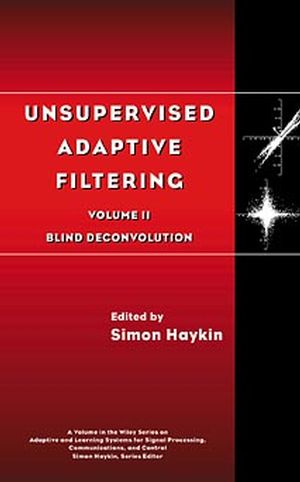Unsupervised Adaptive Filtering, Volume 2, Blind DeconvolutionISBN: 978-0-471-37941-6
Hardcover
200 pages
April 2000
 This is a Print-on-Demand title. It will be printed specifically to fill your order. Please allow an additional 10-15 days delivery time. The book is not returnable.
|
||||||
A complete, one-stop reference on the state of the art of unsupervised adaptive filtering
While unsupervised adaptive filtering has its roots in the 1960s, more recent advances in signal processing, information theory, imaging, and remote sensing have made this a hot area for research in several diverse fields. This book brings together cutting-edge information previously available only in disparate papers and articles, presenting a thorough and integrated treatment of the two major classes of algorithms used in the field, namely, blind signal separation and blind channel equalization algorithms.
Divided into two volumes for ease of presentation, this important work shows how these algorithms, although developed independently, are closely related foundations of unsupervised adaptive filtering. Through contributions by the foremost experts on the subject, the book provides an up-to-date account of research findings, explains the underlying theory, and discusses potential applications in diverse fields. More than 100 illustrations as well as case studies, appendices, and references further enhance this excellent resource. Following coverage begun in Volume I: Blind Source Separation, this volume discusses:
* The core of FSE-CMA behavior theory
* Relationships between blind deconvolution and blind source separation
* Blind separation of independent sources based on multiuser kurtosis optimization criteria
While unsupervised adaptive filtering has its roots in the 1960s, more recent advances in signal processing, information theory, imaging, and remote sensing have made this a hot area for research in several diverse fields. This book brings together cutting-edge information previously available only in disparate papers and articles, presenting a thorough and integrated treatment of the two major classes of algorithms used in the field, namely, blind signal separation and blind channel equalization algorithms.
Divided into two volumes for ease of presentation, this important work shows how these algorithms, although developed independently, are closely related foundations of unsupervised adaptive filtering. Through contributions by the foremost experts on the subject, the book provides an up-to-date account of research findings, explains the underlying theory, and discusses potential applications in diverse fields. More than 100 illustrations as well as case studies, appendices, and references further enhance this excellent resource. Following coverage begun in Volume I: Blind Source Separation, this volume discusses:
* The core of FSE-CMA behavior theory
* Relationships between blind deconvolution and blind source separation
* Blind separation of independent sources based on multiuser kurtosis optimization criteria



